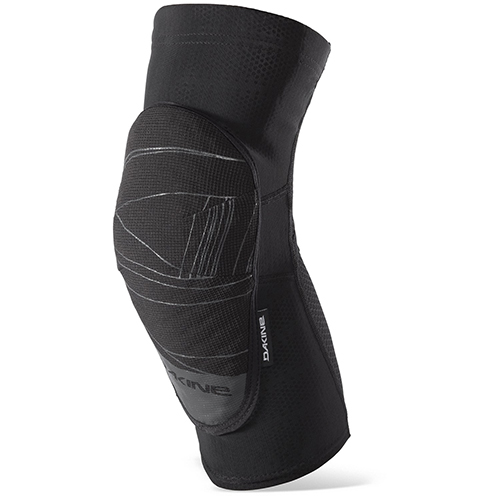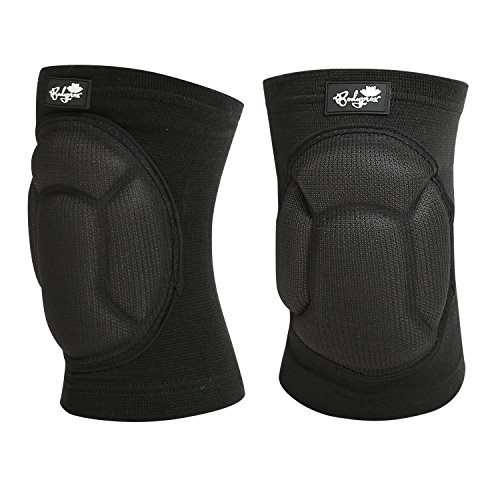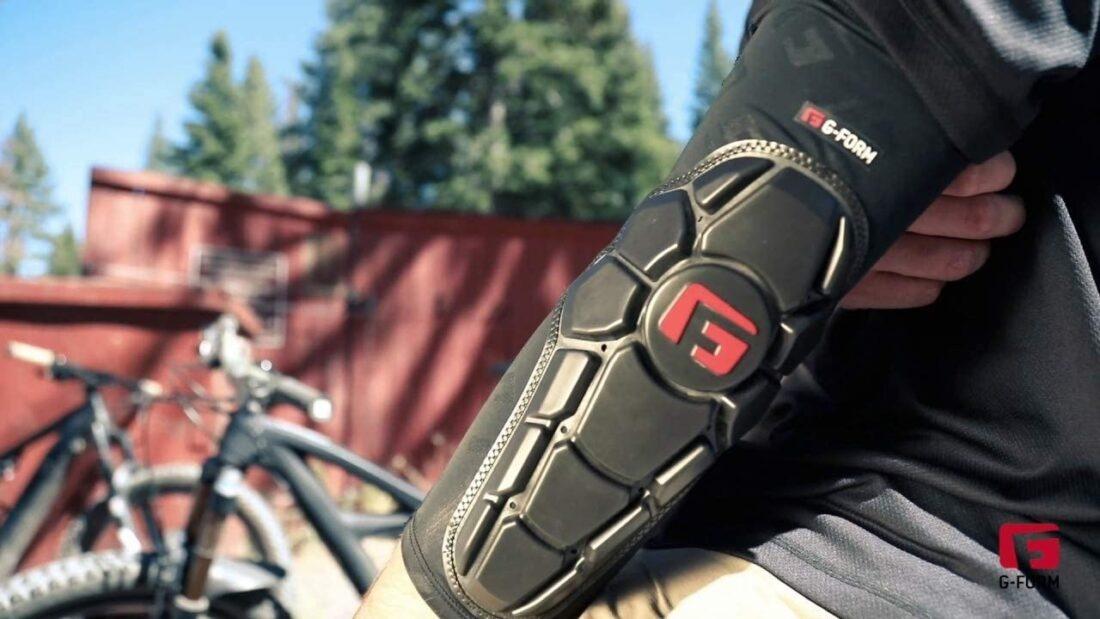The Significance of Knee Pads in Mountain Biking
Mountain biking knee pads are essential safety equipment for any rider, regardless of their skill level. The primary function of knee pads is to protect the knee joints from impact, abrasions, and other injuries that may occur during a fall or crash. Given the inherent risks associated with off-road cycling, investing in high-quality knee protection is a wise decision.
Riders who prioritize wearing mountain biking knee pads not only safeguard their knees but also enhance their overall confidence. With the added protection, riders can push their limits, attempt more challenging trails, and execute advanced techniques without excessive fear of injury. Moreover, knee pads can contribute to improved performance, as they may provide additional support and stability to the knee joints, reducing fatigue and enabling riders to maintain optimal form throughout their rides.
Mountain biking knee pads cater to a wide range of preferences and requirements, with various designs, materials, and protection levels available. Selecting the right knee pads involves considering several factors, such as fit, ventilation, and price, to ensure a comfortable and secure riding experience. By carefully evaluating these aspects, riders can identify the knee pads that best suit their needs and complement their mountain biking gear.
Factors to Consider When Choosing Mountain Biking Knee Pads
When selecting mountain biking knee pads, it is crucial to consider several factors to ensure a comfortable and secure fit. These factors include fit, protection level, material, ventilation, and price.
Fit: A proper fit is essential for optimal knee pad performance. Ill-fitting knee pads may slide down or cause discomfort during rides, negatively impacting the rider’s experience. To guarantee a correct fit, measure the knee circumference and refer to the manufacturer’s size chart. Some knee pads offer adjustable straps to fine-tune the fit, while others come in different sizes.
Protection Level: Mountain biking knee pads vary in their protective capabilities. Some models focus on providing lightweight, minimalist protection, while others offer robust coverage and extensive impact absorption. Assess your riding style and the terrain you frequently encounter to determine the appropriate protection level. For downhill or aggressive trail riding, consider knee pads with higher protection levels, while cross-country riders might prefer lightweight, breathable options.
Material: The material of mountain biking knee pads impacts their durability, comfort, and breathability. Look for pads made from abrasion-resistant materials that can withstand the rigors of off-road cycling. Additionally, consider knee pads with moisture-wicking properties to keep the skin dry and prevent overheating.
Ventilation: Ventilation is an important factor, particularly for warm-weather rides. Well-ventilated knee pads help prevent excessive sweating and discomfort. Some models incorporate perforations, mesh panels, or adjustable ventilation systems to enhance airflow.
Price: Mountain biking knee pads are available at various price points, from budget-friendly options to high-end models. While expensive knee pads often boast advanced features and superior materials, affordable options can still provide adequate protection and comfort. Determine your budget and prioritize the factors most important to you when selecting knee pads.
Top Recommended Mountain Biking Knee Pads in the Market
When it comes to selecting mountain biking knee pads, numerous high-quality options are available to suit various preferences and requirements. Here are some of the top-rated knee pads in the market:
Fox Racing Launch Pro D3O Knee Guard: The Fox Racing Launch Pro D3O Knee Guard offers excellent protection and comfort, thanks to its D3O impact-absorbing material and perforated, breathable construction. The knee guards feature a secure, adjustable fit and a low-profile design, making them suitable for aggressive trail and enduro riding.
Troy Lee Designs Skyline Knee Guard: The Troy Lee Designs Skyline Knee Guard is a lightweight, breathable knee pad designed for all-mountain and trail riding. It features a D3O insert for impact protection, moisture-wicking fabric, and an adjustable, secure fit. The Skyline Knee Guard is an excellent choice for riders seeking a balance between protection and comfort.
POC VPD 2.0 Knee Protectors: The POC VPD 2.0 Knee Protectors are versatile knee pads suitable for various riding styles, from cross-country to downhill. These knee pads boast a ventilated, flexible design and a visco-elastic polymer material that hardens upon impact for superior protection.
Leatt Airflex Pro Knee Guard: The Leatt Airflex Pro Knee Guard is a CE-certified knee pad designed for gravity and enduro riding. It features a lightweight, breathable construction, adjustable straps, and Leatt’s 3DF impact foam for excellent protection. The Airflex Pro Knee Guard also includes a silicone grip lining to prevent slipping during rides.
Detailed Reviews of Selected Mountain Biking Knee Pads
To help you make an informed decision when purchasing mountain biking knee pads, we’ve compiled detailed reviews of each recommended model.
Fox Racing Launch Pro D3O Knee Guard: The Launch Pro D3O Knee Guard by Fox Racing is a popular choice among mountain bikers due to its excellent protection and comfort. The knee guards feature D3O impact-absorbing material, which hardens upon impact to protect your knees from injuries. The perforated, breathable construction ensures optimal airflow, keeping you cool during rides. The knee guards also have a secure, adjustable fit, thanks to the hook-and-loop straps, and a low-profile design that doesn’t restrict movement.
Troy Lee Designs Skyline Knee Guard: The Troy Lee Designs Skyline Knee Guard is a lightweight, breathable knee pad designed for all-mountain and trail riding. These knee pads feature a D3O insert for impact protection and moisture-wicking fabric to keep you dry and comfortable. The Skyline Knee Guard has an adjustable fit, with hook-and-loop straps that allow you to customize the fit for maximum security. The low-profile design ensures minimal interference with pedaling, making it suitable for long rides.
POC VPD 2.0 Knee Protectors: The POC VPD 2.0 Knee Protectors are versatile knee pads suitable for various riding styles, from cross-country to downhill. These knee pads boast a ventilated, flexible design and a visco-elastic polymer material (VPD) that hardens upon impact for superior protection. The pre-shaped construction ensures a comfortable fit, while the adjustable straps allow for a customized fit. The VPD 2.0 Knee Protectors are an excellent choice for riders seeking a balance between protection, comfort, and flexibility.
Leatt Airflex Pro Knee Guard: The Leatt Airflex Pro Knee Guard is a CE-certified knee pad designed for gravity and enduro riding. It features a lightweight, breathable construction, adjustable straps, and Leatt’s 3DF impact foam for excellent protection. The silicone grip lining prevents slipping during rides, ensuring a secure fit. The Airflex Pro Knee Guard is an ideal option for riders who prioritize protection and comfort in demanding terrains.
How to Properly Size and Fit Mountain Biking Knee Pads
To ensure optimal protection and comfort, it’s crucial to select mountain biking knee pads that fit correctly. Here are the steps to properly size and fit your knee pads:
1. Measure your knee circumference: Use a flexible measuring tape to measure the circumference of your knee, just below the knee cap. Compare this measurement to the manufacturer’s size chart to determine the appropriate size.
2. Adjust the straps: Most knee pads come with adjustable straps that allow you to customize the fit. Start by loosening the straps, then slide the knee pad on and tighten the straps until the pad feels snug but not overly restrictive. Ensure that the knee cap is properly aligned with the knee pad’s protective area.
3. Test the fit during a ride: It’s essential to test the fit of your knee pads while riding, as the fit may feel different when pedaling or navigating technical terrain. The knee pads should stay in place without sliding down or causing discomfort. If necessary, make further adjustments to the straps.
4. Consider additional sizing options: Some knee pads offer multiple sizing options, such as small, medium, and large. Others may come in a one-size-fits-most design. If you’re between sizes or have unique sizing requirements, consult the manufacturer’s sizing guidelines or reach out to their customer support for assistance.
5. Keep in mind the type of riding: The type of riding you engage in may influence the fit and size of your knee pads. For example, downhill or enduro riders may prefer a more snug fit for maximum protection and security, while cross-country riders might opt for a slightly looser fit for increased comfort and mobility.
By following these steps, you can ensure a proper fit for your mountain biking knee pads, maximizing both protection and comfort during your rides.
Maintaining and Cleaning Mountain Biking Knee Pads
Properly maintaining and cleaning your mountain biking knee pads can help prolong their lifespan and ensure they remain effective in protecting your knees. Here are some tips on how to care for your knee pads:
Washing mountain biking knee pads: Most knee pads can be hand washed or machine washed on a gentle cycle using cold water. Avoid using bleach or fabric softeners, as these can damage the materials and reduce the knee pads’ protective capabilities. After washing, gently squeeze out excess water and lay the knee pads flat to dry.
Drying mountain biking knee pads: It’s essential to let your knee pads dry completely before storing or using them again. Avoid using a dryer, as the high heat can warp the protective materials and reduce their effectiveness. Instead, lay the knee pads flat or hang them up to air dry.
Storing mountain biking knee pads: Store your knee pads in a cool, dry place away from direct sunlight. This will help prevent the materials from degrading and maintain their protective qualities. Avoid storing them in damp or humid environments, as this can lead to mold growth and material deterioration.
Inspecting mountain biking knee pads: Regularly inspect your knee pads for signs of wear, tear, or damage. Check the protective materials, straps, and seams for any issues that may compromise the knee pads’ performance. If you notice any damage, consider replacing the knee pads or having them repaired by the manufacturer.
Rotating mountain biking knee pads: If you frequently ride, consider investing in multiple pairs of knee pads to allow for rotation. This will help ensure that each pair has time to dry and maintain its protective qualities, as well as extend the overall lifespan of your knee pads.
Comparing Mountain Biking Knee Pads to Other Protection Gear
Mountain biking knee pads are an essential piece of safety equipment for any rider, but they are not the only protective gear to consider. Here’s a comparison of mountain biking knee pads to other protective gear, such as elbow pads, helmets, and gloves:
Elbow pads: Like knee pads, elbow pads provide crucial protection for riders. They help prevent injuries to the elbow joint and reduce the risk of road rash or abrasions in the event of a fall. Elbow pads are available in various protection levels, materials, and designs, much like knee pads. When selecting elbow pads, consider factors such as fit, ventilation, and price, just as you would when choosing knee pads.
Helmets: A high-quality helmet is a must-have for any mountain biker. Helmets protect your head and brain from impact in the event of a crash, reducing the risk of severe injuries or even death. Mountain biking helmets come in various styles, such as full-face, half-shell, and convertible, to accommodate different riding disciplines and preferences. When selecting a helmet, look for features such as MIPS technology, adjustable fit systems, and ventilation.
Gloves: Mountain biking gloves offer several benefits, including improved grip, reduced hand fatigue, and protection from blisters and abrasions. Gloves can also help absorb vibrations from the bike, providing a more comfortable riding experience. When choosing gloves, consider factors such as fit, material, padding, and ventilation. Some gloves even come with built-in knuckle protection for added safety.
By understanding the role each piece of protective gear plays in mountain biking, riders can make informed decisions about their safety equipment and ensure they are well-protected on the trails. While knee pads are an essential part of any rider’s kit, it’s crucial to consider the broader picture and invest in a well-rounded set of protective gear to maximize safety and enhance the overall riding experience.








